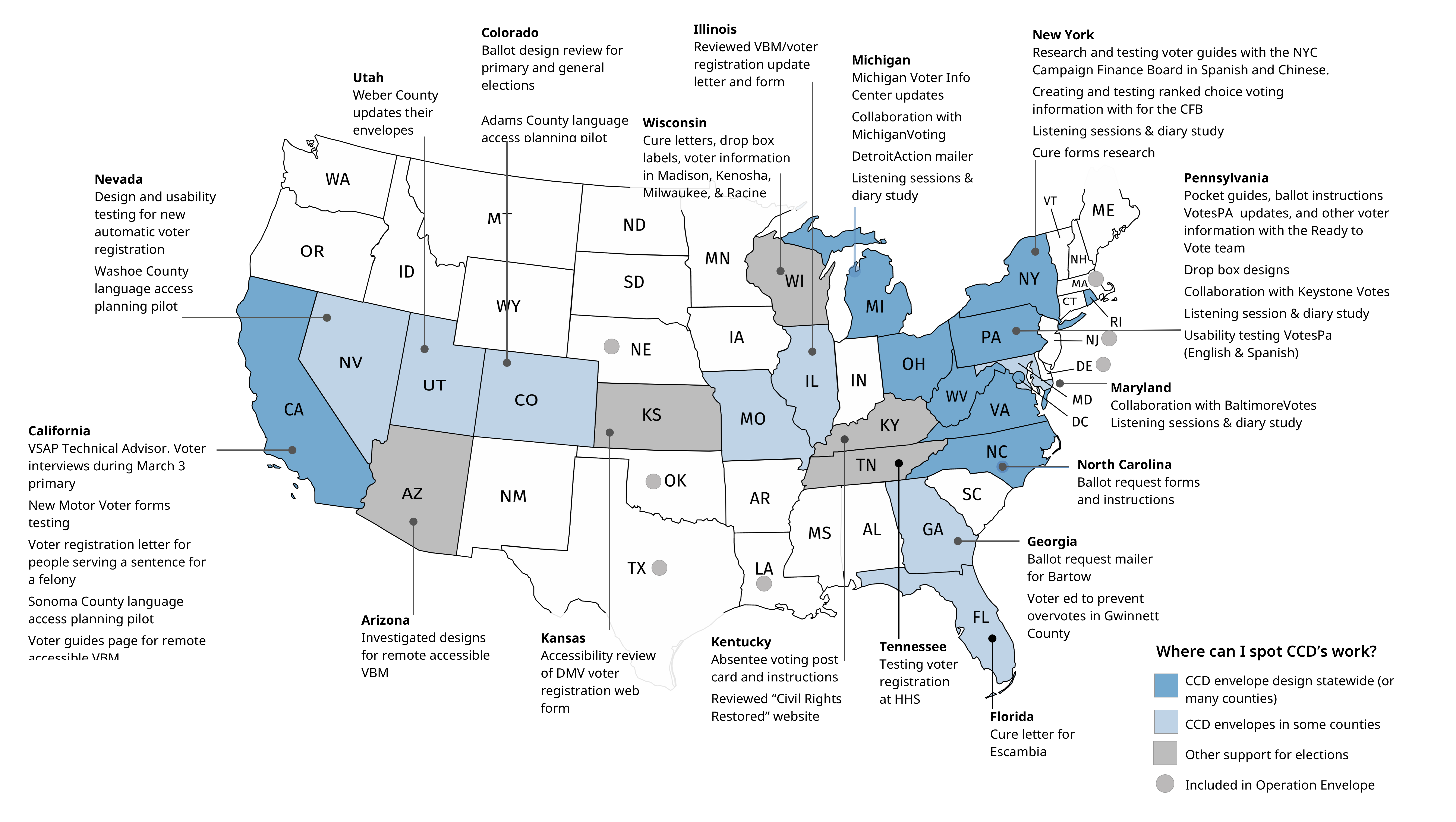2020, the year of decades
It’s been quite a year–a year of decades as one of the voters we spoke to said. But we’ve managed to get a lot done.
Center for Civic Design in 2020
Invitations to participation: modernizing access to voting and effective election administration during a pandemic
For a few months, it was business as usual. We went to conferences run by NASED and the EAC. We ran workshops, kicked off the language access planning project, worked with the Pennsylvania Department of State to design their absentee ballot envelopes to meet the new rules under Act 77, and teamed up with ideas42 to interview voter as Los Angeles launched its long-anticipated Voting System for All People.
And then it was March, when everything changed.
We quickly realized that voting by mail was going to be an even larger part of this election than we’d imagined. Luckily, we had a good foundation with a solid design for usable envelopes and signature forms already in use in several states.
Starting from that work and webinars on best practices (cohosted with CTCL and the Vote at Home Institute), we created a toolkit of designs for scaling-up vote by mail to put all of our materials online for any election office to use. It holds templates and samples of mail-in envelopes, ballot request forms and notices, cure forms and guidance for working with the US Postal Service.
We worked on ballot envelopes with election offices in 27 states, through a project we call Operation Envelope. As a result:
- 12 states are using all or part of our envelope designs
- 5 more states have our envelopes used in some counties, and we are still finding examples “in the wild” of counties adopting all or part of the design
- 10 states expressed interest in envelope design for 2021 and we will be following up

In preparations for the general election, we worked with 15 states on things like:
- Ballot request forms and voter notification mailers
- Cure letters, phone scripts and forms
- Voter information for web and in Pocket Guides
- Drop box designs and additional notices
- Election administration forms for the Election Group
- Poll worker “what if” cheat-sheets
- Accessible vote by mail and accessible voting information on HealthyVoting.org, possibly the only nationwide coverage
- Proactive voter messaging for ballot issues from naked ballots to two-column contests
Research is an important foundation of civic design. We worked with over 300 voters, including people with disabilities, speakers of Spanish, Chinese, or other languages, and voters of color from marginalized communities. Some research took the form of usability testing projects for specific contexts, other research explored design challenges of voting by mail or the barriers to voting from overseas. The largest project was a series of interviews with voters in 4 cities during October and November.
We scaled up Center for Civic Design, too, bringing on new team members as we joined the rest of elections working hard to Get. It. Done. We are in awe of the officials who ran elections with grace and integrity this year, and proud to have helped in any way.
As we go into 2021, our expanded team brings diverse backgrounds from ethnography to linguistics, and a native-Spanish-speaking researcher. We’re also building the organization, adding operations support so we can do more.
There will be plenty to do. We look forward to:
- Working with jurisdictions that just didn’t have the capacity for a redesign in 2020, but are eager to improve the voting experience, for voting by mail or in person.
- Helping the New York City Campaign Finance Board, Board of Elections and advocates launch rank choice voting.
- Continuing work supporting the development of the Voluntary Voting System Standards (VVSG 2.0), which we hope to see launched this year.
- Seeing more states adopt automatic voter registration. This paused during the pandemic, but a new year brings new opportunities. In 2019-2020 we helped launch new programs in Colorado, Michigan, Nevada, and Tennessee in DMVs and DHS agencies. We are also proud to have been part of the success of the California New Motor Voter, which has helped raise voter registration in the state to record levels.
- Expanding our work on language access, including supporting elections offices as they launch new programs, and research on the best ways to design bilingual (or more) information.
It’s going to be exciting!

